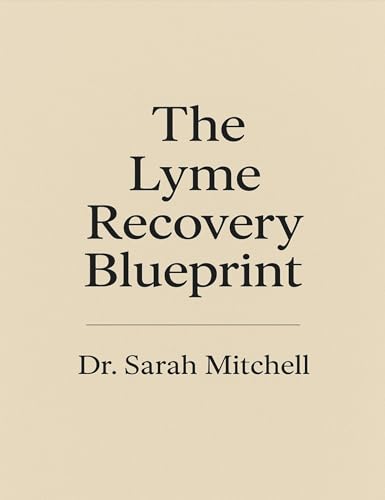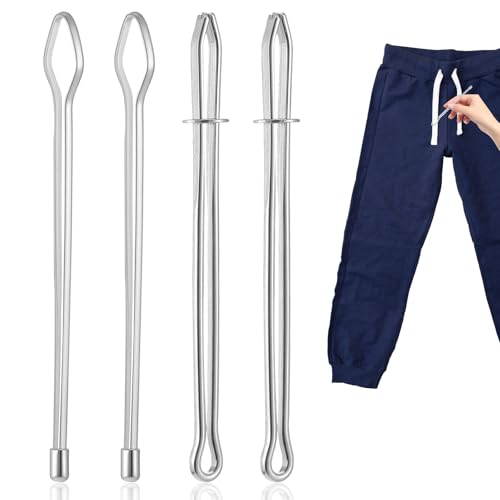Choosing to sew with organic cotton isn’t just a trend—it’s a step toward a more sustainable future. You’ll find that this natural fiber offers a softness and durability that enhance your creations while being kind to the environment.
When you select organic cotton, you’re supporting farming practices that reduce chemical use and promote healthier ecosystems. Plus, your garments will breathe better and last longer, giving you both comfort and peace of mind. Embrace organic cotton in your sewing projects and make a positive impact with every stitch.
Understanding Organic Cotton
Organic cotton differs fundamentally from conventional cotton by its cultivation methods. It avoids synthetic pesticides and fertilizers, promoting healthier soil and ecosystems. By choosing organic cotton, you support farming practices that reduce environmental impact.
Key Characteristics of Organic Cotton
- Chemical-Free Farming: Grown without harmful pesticides or synthetic fertilizers, ensuring a safer environment for farmers and wildlife.
- Sustainable Water Use: Uses up to 91% less water compared to conventional cotton, conserving vital water resources.
- Soil Health: Enhances soil fertility through crop rotation and natural composting, preventing soil degradation.
- Biodiversity Preservation: Maintains diverse plant and animal life, contributing to balanced ecosystems.
Certifications to Look For
- Global Organic Textile Standard (GOTS): Ensures compliance with organic farming and manufacturing standards.
- Organic Content Standard (OCS): Verifies the presence and chain of custody of organic materials.
- Fair Trade Certified: Guarantees fair labor practices and sustainable community development.
Environmental Benefits
| Benefit | Impact |
|---|---|
| Reduced Chemical Use | Decreases soil and water pollution |
| Lower Carbon Footprint | Minimizes greenhouse gas emissions |
| Enhanced Water Efficiency | Preserves freshwater resources |
| Improved Soil Health | Prevents erosion and degradation |
Understanding these aspects of organic cotton helps you make informed choices in your sewing projects, aligning your crafts with sustainability goals.
Benefits Of Sewing With Organic Cotton
Choosing organic cotton enhances your sewing projects with multiple advantages. It supports sustainable practices while providing premium quality fabrics.
Environmental Sustainability
Organic cotton significantly minimizes environmental impact compared to conventional cotton.
| Environmental Aspect | Organic Cotton | Conventional Cotton |
|---|---|---|
| Water Usage | Up to 91% less water | High water consumption |
| Pesticide Use | No synthetic pesticides | Extensive pesticide use |
| Carbon Footprint | Reduced emissions | Higher carbon emissions |
| Soil Health | Enhanced through crop rotation | Degraded soil quality |
| Biodiversity | Promotes diverse ecosystems | Lowers biodiversity |
By eliminating synthetic chemicals and reducing water usage, organic cotton fosters healthier ecosystems and lowers the overall carbon footprint of your sewing projects.
Health And Safety
Sewing with organic cotton ensures safer and healthier outcomes for both you and those who wear your creations.
- Chemical-Free Fabric: Avoid exposure to harmful pesticides and fertilizers during the sewing process.
- Hypoallergenic Properties: Natural fibers reduce the risk of skin irritations and allergic reactions.
- Improved Air Quality: Organic cotton garments emit fewer volatile organic compounds (VOCs), promoting cleaner air.
- Safe Handling: Lower risk of respiratory issues and other health problems associated with chemical exposure.
Opting for organic cotton not only enhances the quality of your work but also prioritizes the well-being of everyone involved.
Selecting The Right Organic Cotton Fabrics
Choosing the appropriate organic cotton fabric enhances your sewing projects’ quality and sustainability. Consider the following factors to make informed decisions:
Fabric Types
- Jersey: Ideal for garments like T-shirts and dresses, offering stretch and comfort.
- Canvas: Suitable for accessories and bags, providing durability and structure.
- Linen Blend: Perfect for lightweight clothing, combining breathability with strength.
- Denim: Excellent for jeans and jackets, ensuring longevity and a classic look.
Fabric Weight and Weave
- Lightweight (3-5 oz): Best for summer clothing and delicate projects.
- Medium Weight (5-7 oz): Versatile for a range of garments and home textiles.
- Heavyweight (7+ oz): Suitable for outerwear and sturdy accessories.
- Weave Types: Choose between plain, twill, or satin weaves based on project requirements.
Color and Dyeing
- Natural Colors: Opt for undyed fabrics to minimize environmental impact.
- Eco-Friendly Dyes: Select fabrics dyed with low-impact, non-toxic dyes to ensure safety and sustainability.
- Colorfastness: Ensure the dyeing process meets standards for colorfastness to maintain vibrancy over time.
Certifications to Look For
- Global Organic Textile Standard (GOTS): Guarantees organic status and environmentally friendly processing.
- Organic Content Standard (OCS): Verifies the organic origin of fibers throughout the supply chain.
- Fair Trade Certified: Ensures ethical production practices and fair wages for workers.
Sourcing and Quality
- Supplier Reputation: Purchase from reputable suppliers who prioritize sustainability and quality.
- Fabric Testing: Verify fabric quality through touch and visual inspection to ensure it meets your project’s needs.
- Sustainability Practices: Choose suppliers that implement sustainable farming and manufacturing practices.
Price and Availability
- Budget Considerations: Balance cost with quality by comparing prices from different suppliers.
- Availability: Ensure the desired fabric is readily available to avoid project delays.
- Bulk Purchasing: Consider buying in bulk for discounts if planning large projects.
Care Instructions
- Ease of Maintenance: Select fabrics that align with your ability to care for them, ensuring longevity.
- Washing Requirements: Check if the fabric requires special washing methods to maintain quality.
- Durability: Choose fabrics with proven durability for long-lasting projects.
By evaluating these aspects, you can select the right organic cotton fabrics that align with your sewing goals and sustainability values.
Sewing Techniques For Organic Cotton
Master these techniques to enhance your sewing projects with organic cotton.
Handling And Care Tips
Proper handling ensures the longevity of your organic cotton garments. Pre-wash fabrics to prevent shrinkage, using cold water to maintain color integrity. Iron on medium heat while the fabric is slightly damp to achieve a smooth finish without damaging fibers. Store creations in a cool, dry place, avoiding direct sunlight to prevent fading. When washing, use mild, eco-friendly detergents to preserve the fabric’s natural properties and reduce environmental impact.
Best Practices For Durable Sewing
Achieve durable results with these best practices:

- Choose the Right Needle: Use sharp, high-quality needles like size 80/12 or 90/14 for lightweight organic cotton and heavier needles for thicker fabrics.
- Select Strong Threads: Opt for 100% cotton or polyester threads to match the fabric’s breathability and strength.
- Reinforce Seams: Double-stitch stress points such as armholes and pockets to prevent tearing and ensure longevity.
- Use Proper Cutting Techniques: Cut fabric with precision using rotary cutters or sharp scissors, and stabilize patterns to maintain accuracy.
- Employ Appropriate Stitch Types: Utilize straight stitches for seams, zigzag stitches for stretchy areas, and topstitching for added durability and a professional finish.
- Press Seams Regularly: Press seams open or to one side during construction to reduce bulk and increase the garment’s durability.
By implementing these techniques, your organic cotton projects remain robust and retain their quality over time.
Comparing Organic Cotton To Other Materials
Organic cotton stands out in the sustainable fabric landscape, but how does it measure against other materials? Here’s a comparison to help you make informed choices for your sewing projects.
Organic Cotton vs. Conventional Cotton
| Feature | Organic Cotton | Conventional Cotton |
|---|---|---|
| Pesticide Use | None | High use of synthetic pesticides |
| Water Consumption | Up to 91% less | Higher water usage |
| Soil Health | Enhanced through crop rotation | Soil degradation from chemicals |
| Carbon Footprint | Lower carbon emissions | Higher due to intensive farming |
| Cost | Typically higher | Generally lower |
Organic cotton uses no synthetic pesticides and less water, fostering healthier soil and reducing carbon footprints compared to conventional cotton.
Organic Cotton vs. Synthetic Fibers
| Feature | Organic Cotton | Synthetic Fibers (e.g., Polyester) |
|---|---|---|
| Environmental Impact | Biodegradable, renewable resource | Derived from fossil fuels, non-biodegradable |
| Comfort | Soft and breathable | Less breathable, can feel synthetic |
| Durability | Durable with proper care | Highly durable but less sustainable |
| Moisture Absorption | High, better for comfort | Low, retains moisture |
| Cost | Higher initial cost | Generally lower |
Compared to synthetic fibers like polyester, organic cotton offers superior breathability and comfort while being more environmentally friendly.
Organic Cotton vs. Other Natural Fibers
| Feature | Organic Cotton | Linen | Hemp |
|---|---|---|---|
| Sustainability | High | High, requires less water | Very high, grows quickly and regenerates |
| Texture | Soft and versatile | Crisp, cool feel | Rougher texture, softens with use |
| Durability | Strong and long-lasting | Extremely durable | One of the strongest natural fibers |
| Care | Easy to care for | Can wrinkle easily | Requires similar care to cotton |
| Cost | Moderate to high | Generally higher | Similar to or higher than organic cotton |
Organic cotton, linen, and hemp each offer unique benefits. While linen provides a crisp texture and hemp excels in durability, organic cotton balances comfort and sustainability effectively.
« 10 Must-Try Sewing Art Deco Styles: A 1920s Twist for Stunning Fashion
10 Proven Steps on How to Teach a Sewing Workshop Locally Like a Pro »
By comparing organic cotton with conventional cotton, synthetic fibers, and other natural materials, you can choose the best fabric that meets both your sewing needs and sustainability goals.
Conclusion
Opting for organic cotton transforms your sewing projects into sustainable masterpieces. You’ll appreciate the softness and durability that enhance each creation while making a positive impact on the environment.
Supporting organic cotton means backing eco-friendly farming practices that protect our planet. With every stitch, you’re choosing quality and sustainability, ensuring your garments are both beautiful and responsible.
Embrace organic cotton and enjoy the peace of mind that comes with crafting garments that are good for you and the Earth. Start your sustainable sewing journey today and make a meaningful difference.


















